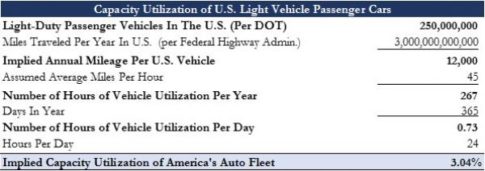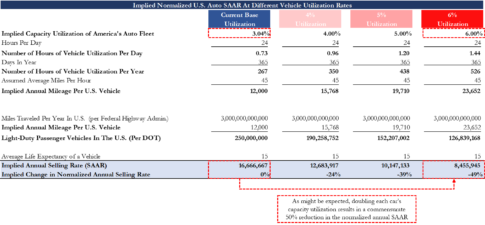– Ford Announces Plans To Self-Destruct Starting In 2021:
Ford CEO, Mark Fields, sat down with Bloomberg to discuss plans to introduce a completely autonomous car by 2021. The only real problem we see with that plan is that it pretty much ensures their own demise. That said, they’re pretty much doomed anyway so might as well go for it.
The company said it plans to have a fully autonomous vehicle — no steering wheel, no gas or brake pedals — available by 2021 for ride-hailing services.
“We see the autonomous car changing the way the world moves once again,” Chief Executive Officer Mark Fields said today at Ford’s research lab in Palo Alto, California. “They address a whole host of safety, social and environmental issues.”
Like Alphabet Inc.’s Google, Ford will skip the interim steps of driver-assisted technology as a way to evolve toward full autonomy. Its plan to deploy self-driving cars in ride-hailing and ride-sharing fleets is similar to what General Motors Co. aims to do with Lyft Inc. Ford’s 2021 scheduled start matches BMW’s ambitious timeframe.
“We believe in our plan that taking the driver out of the loop is really important,” Fields said in an interview with Bloomberg Television. The automaker couldn’t find a sensible way through the “no-man’s land” — determining exactly when a robotic car should to try to re-engage a human driver in an emergency.
So what do we mean when we say an autonomous car pretty much ensures Ford’s demise? To be clear, we’re not specifically targeting Ford…the whole auto industry is in serious trouble when truly autonomous driving arrives. Below is a little math to help illustrate the point.
Right now there are roughly 250mm light-duty passenger cars on the road in the U.S. (that’s about 1 car per driving age person, btw, which is fairly astounding by itself). American’s travel roughly 3 trillion miles per year in aggregate which which means that each car travels an average of 12k miles per year. Now if you assume the average rate of travel is 45 miles per hour then you’ll find that each car is implied to be on the road for an average of about 45 minutes per day. That’s a capacity utilization of about 3% (see table below for quick math).
A 3% capacity utilization ratio is, needless to say, fairly terrible. We don’t imagine too many CFOs would model capital allocation decisions based on a 3% capacity utilization for fixed assets. That said, individuals are forced to underwrite car purchases to a 3% capacity utilization because they have no choice. People have to get to work and 100% reliance on public transit options as just not feasible for most people in this country.
That is, until the arrival of completely autonomous vehicles. The problem with mass transit is that people still need a car to get back and forth to the train station or bus stop. The problem with Ubers/Taxis is that they’re expensive for daily use due primariliy to the labor overhead that’s built into your per mile rate. But fully autonous vehicles solve both those problems. Now, people will have the option of a vehicle at their beck and call without having to fund the upfront capital cost of a purchase and/or the per unit human capital costs inherent in taking an Uber. In other words, the per mile rental rate of a fully autonomous car should be competed down to a level that provides an adequate return solely on the cost of the vehicle…no wages, no benefits, none of the typical hassles associated with employing people. Or, said another way, taking an Uber is going to get really freaking cheap.
But the best part is that capacity utilization with fully autonomous cars can skyrocket driving per unit costs even lower for passengers. For example, when you drive to work right now your car sits there all day until you drive home. In the autonomous car world, that car will drive you to work then go pick up multiple other poeple to do the same thing. Now, if capacity utilization doubles from just 3% to 6% all of sudden half the number of cars are required in the US which means annual SAAR goes from ~17mm to ~8.5mm…which means Ford and GM likely find themselves in another bailout situation.
So goodluck with that fully autonomous car. We wish you the best.
PayPal: Donate in USD
PayPal: Donate in EUR
PayPal: Donate in GBP

